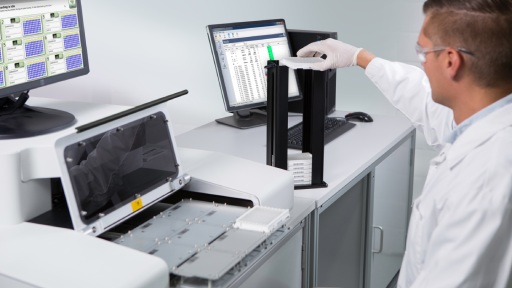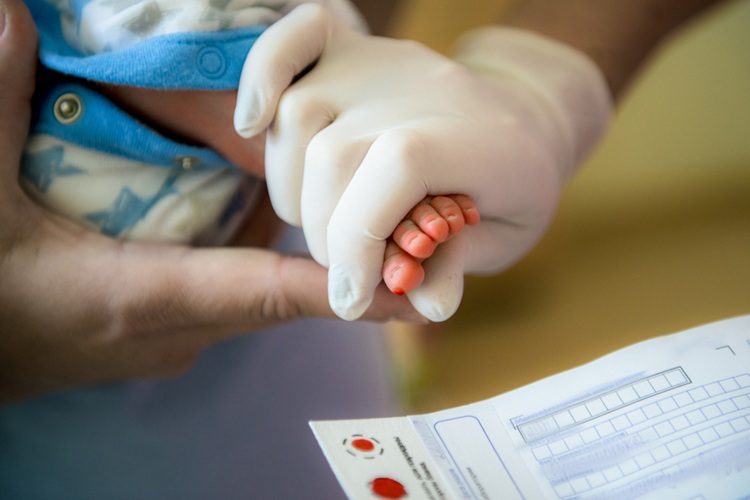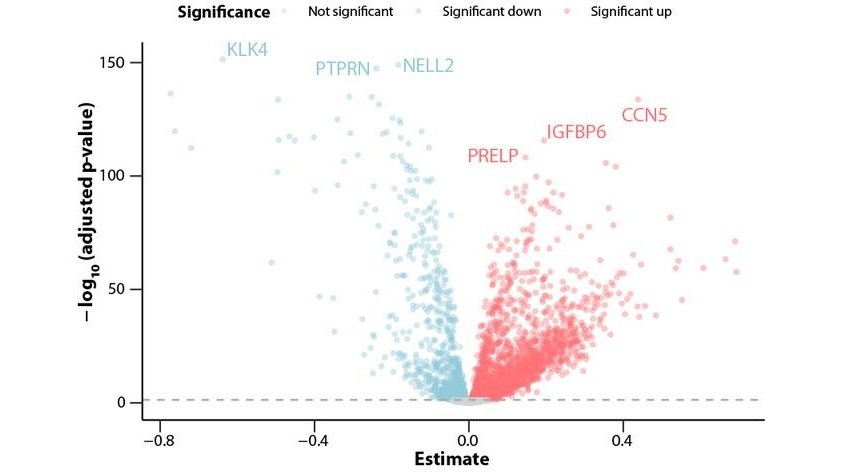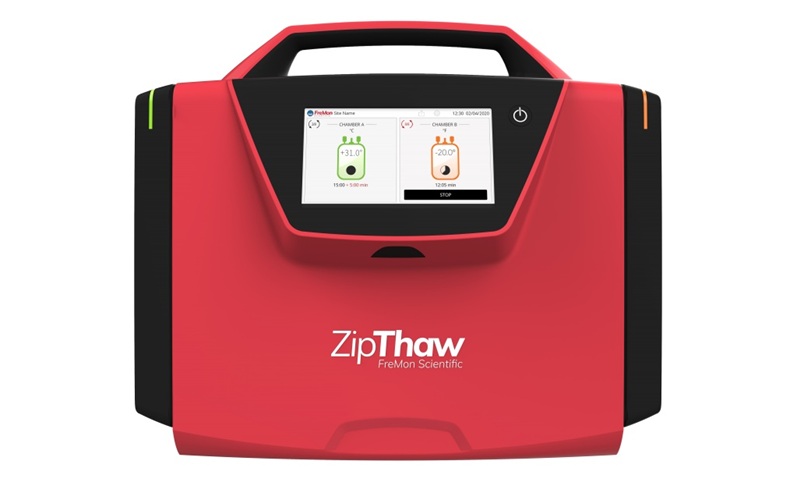Optimized Immunoassays Detect HBV in Oral Fluid Samples
|
By LabMedica International staff writers Posted on 05 Sep 2019 |
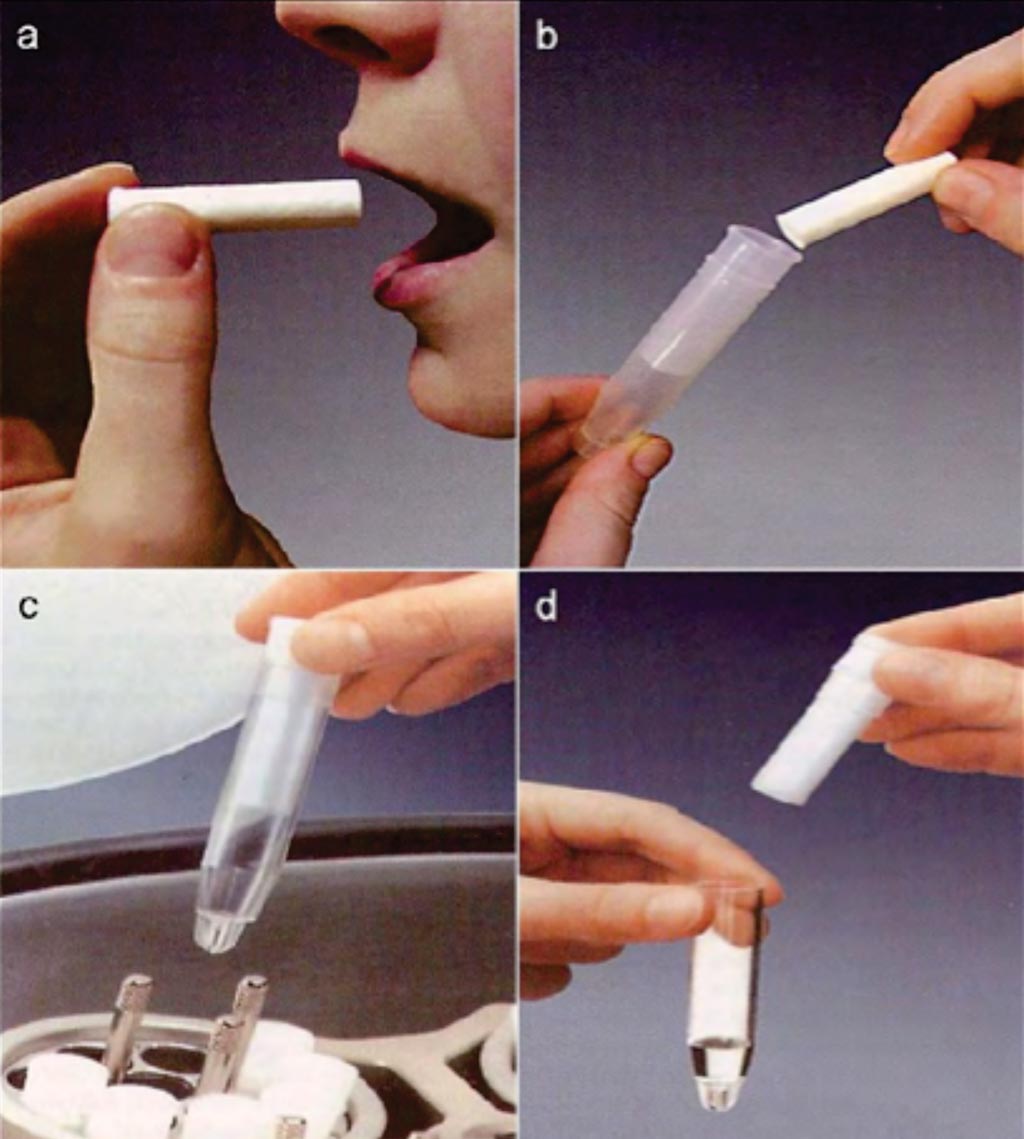
Image: A collection of whole saliva by the Salivette (absorbent) method. (a) Saliva is collected by chewing a cotton wool swab. (b) The swab containing saliva is placed in the tube of Salivette. (c) Centrifugation of the assemblage. (d) Saliva is separated from the swab and is ready for analysis (Photo courtesy of Sarstedt).
It is estimated that there are 257 million chronic hepatitis B (HBV) carriers worldwide, which highlights the substantial health, social, and economic burden of HBV. Screening of infected, cured and vaccinated individuals is necessary to identify the presence of chronically infected reservoirs, immune and susceptible individuals.
Currently, HBV infection diagnosis is performed using serum and plasma samples collected via venipuncture, which can be invasive, expensive, and potentially painful and arduous for some individuals including the elderly, obese, patients receiving hemodialysis, and drug users. In regions where financial resources are scarce, it would be beneficial to use methods with low cost and biological risk, such as oral fluid samples.
Scientists at the Oswaldo Cruz Institute (Rio de Janeiro, Brazil) optimized a commercially available assay for detecting total anti-HBc marker in oral fluid samples and evaluated its utility under real life conditions in different settings for the purposes of prevalence and diagnostic studies. The team collected blood samples, which were centrifuged for serum. Oral fluid was obtained using a commercial Salivette device. All serum samples were submitted to commercial Enzyme immunoassays (EIAs) to detect total anti-HBc antibodies directed against HBV surface antigen (anti-HBs) and HBsAg. All oral fluid samples were also tested with the Diasorin EIA ETI-AB-COREK-PLUS, designed to detect total anti-HBc in serum.
Optimization found the best elution buffer was PBS/BSA 0.5% and the best oral fluid sample volume was 100 µL. The team used these optimized parameters, 1,085 of the samples collected from the 1,296 participants did not detect anti-Hbc; in 211 samples, anti-HBc was detected. The oral fluid sensitivity was 52.6% and specificity was 96%. Sensitivity was higher in patients presenting with an active HBV infection compared with anti-HBc isolate and past infection, 92.7%, 43.2%, and 36.9%, respectively. In addition, sensitivity was higher in participants without active hepatitis C virus infection and also in participants who used injection drugs (85.9%).
The authors concluded that it was possible to optimize a commercial enzyme-linked immunosorbent assay for detecting anti-HBc in oral fluid samples where the highest concordance was found in ambulatory settings and among individuals with active infection. The study was published on July 17, 2019, in the journal BMC Infectious Diseases.
Related Links:
Oswaldo Cruz Institute
Currently, HBV infection diagnosis is performed using serum and plasma samples collected via venipuncture, which can be invasive, expensive, and potentially painful and arduous for some individuals including the elderly, obese, patients receiving hemodialysis, and drug users. In regions where financial resources are scarce, it would be beneficial to use methods with low cost and biological risk, such as oral fluid samples.
Scientists at the Oswaldo Cruz Institute (Rio de Janeiro, Brazil) optimized a commercially available assay for detecting total anti-HBc marker in oral fluid samples and evaluated its utility under real life conditions in different settings for the purposes of prevalence and diagnostic studies. The team collected blood samples, which were centrifuged for serum. Oral fluid was obtained using a commercial Salivette device. All serum samples were submitted to commercial Enzyme immunoassays (EIAs) to detect total anti-HBc antibodies directed against HBV surface antigen (anti-HBs) and HBsAg. All oral fluid samples were also tested with the Diasorin EIA ETI-AB-COREK-PLUS, designed to detect total anti-HBc in serum.
Optimization found the best elution buffer was PBS/BSA 0.5% and the best oral fluid sample volume was 100 µL. The team used these optimized parameters, 1,085 of the samples collected from the 1,296 participants did not detect anti-Hbc; in 211 samples, anti-HBc was detected. The oral fluid sensitivity was 52.6% and specificity was 96%. Sensitivity was higher in patients presenting with an active HBV infection compared with anti-HBc isolate and past infection, 92.7%, 43.2%, and 36.9%, respectively. In addition, sensitivity was higher in participants without active hepatitis C virus infection and also in participants who used injection drugs (85.9%).
The authors concluded that it was possible to optimize a commercial enzyme-linked immunosorbent assay for detecting anti-HBc in oral fluid samples where the highest concordance was found in ambulatory settings and among individuals with active infection. The study was published on July 17, 2019, in the journal BMC Infectious Diseases.
Related Links:
Oswaldo Cruz Institute
Latest Microbiology News
- Fast Noninvasive Bedside Test Uses Sugar Fingerprint to Detect Fungal Infections
- Rapid Sepsis Diagnostic Device to Enable Personalized Critical Care for ICU Patients
- Microfluidic Platform Assesses Neutrophil Function in Sepsis Patients
- New Diagnostic Method Confirms Sepsis Infections Earlier
- New Markers Could Predict Risk of Severe Chlamydia Infection
- Portable Spectroscopy Rapidly and Noninvasively Detects Bacterial Species in Vaginal Fluid
- CRISPR-Based Saliva Test Detects Tuberculosis Directly from Sputum
- Urine-Based Assay Diagnoses Common Lung Infection in Immunocompromised People
- Saliva Test Detects Implant-Related Microbial Risks
- New Platform Leverages AI and Quantum Computing to Predict Salmonella Antimicrobial Resistance
- Early Detection of Gut Microbiota Metabolite Linked to Atherosclerosis Could Revolutionize Diagnosis
- Viral Load Tests Can Help Predict Mpox Severity
- Gut Microbiota Analysis Enables Early and Non-Invasive Detection of Gestational Diabetes
- Credit Card-Sized Test Boosts TB Detection in HIV Hotspots
- Fecal Metabolite Profiling Predicts Mortality in Critically Ill Patients
- Portable Molecular POC System Rules Out UTIs in Just 35 Minutes
Channels
Clinical Chemistry
view channel
VOCs Show Promise for Early Multi-Cancer Detection
Early cancer detection is critical to improving survival rates, but most current screening methods focus on individual cancer types and often involve invasive procedures. This makes it difficult to identify... Read more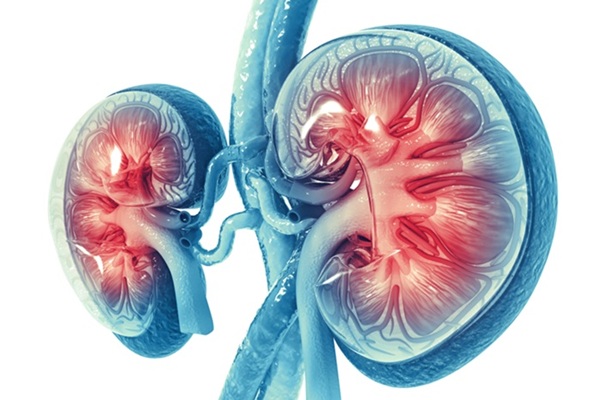
Portable Raman Spectroscopy Offers Cost-Effective Kidney Disease Diagnosis at POC
Kidney disease is typically diagnosed through blood or urine tests, often when patients present with symptoms such as blood in urine, shortness of breath, or weight loss. While these tests are common,... Read moreMolecular Diagnostics
view channel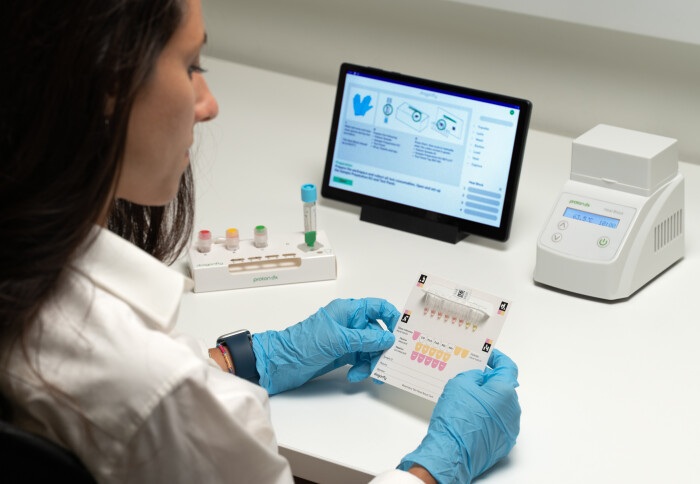
Rapid POC Diagnostic Test Detects Asymptomatic Malaria Cases
Malaria is one of the leading causes of preventable deaths worldwide, with around 95% of all deaths occurring in Africa. Asymptomatic infections are a major driver of ongoing transmission because individuals... Read more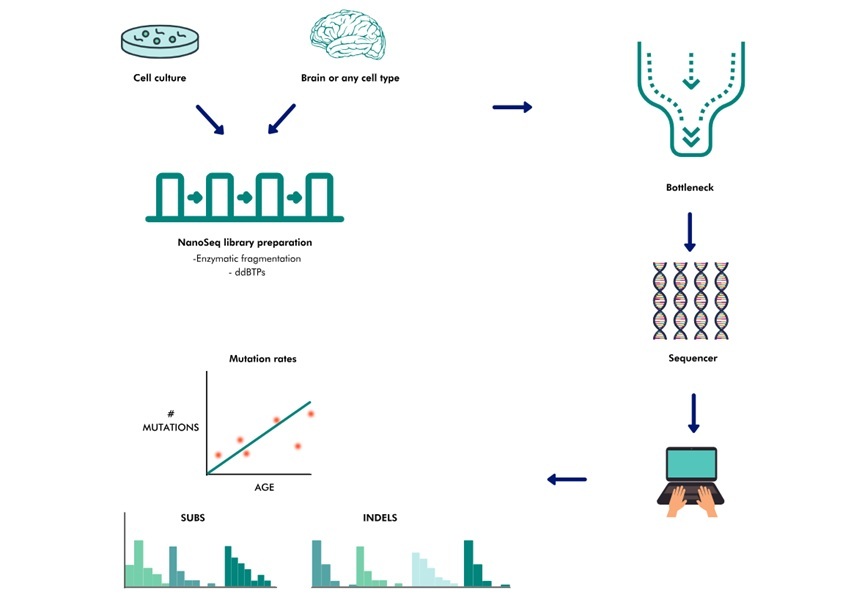
Improved DNA Sequencing Tool Uncovers Hidden Mutations Driving Cancer
As humans age, their cells naturally accumulate DNA mutations, most of which are harmless, but some can give cells a growth advantage and initiate cancer. Detecting these rare mutations in normal tissues... Read moreHematology
view channel
Viscoelastic Testing Could Improve Treatment of Maternal Hemorrhage
Postpartum hemorrhage, severe bleeding after childbirth, remains one of the leading causes of maternal mortality worldwide, yet many of these deaths are preventable. Standard care can be hindered by delays... Read more
Pioneering Model Measures Radiation Exposure in Blood for Precise Cancer Treatments
Scientists have long focused on protecting organs near tumors during radiotherapy, but blood — a vital, circulating tissue — has largely been excluded from dose calculations. Each blood cell passing through... Read more
Platelets Could Improve Early and Minimally Invasive Detection of Cancer
Platelets are widely recognized for their role in blood clotting and scab formation, but they also play a crucial role in immune defense by detecting pathogens and recruiting immune cells.... Read more
Portable and Disposable Device Obtains Platelet-Rich Plasma Without Complex Equipment
Platelet-rich plasma (PRP) plays a crucial role in regenerative medicine due to its ability to accelerate healing and repair tissue. However, obtaining PRP traditionally requires expensive centrifugation... Read moreImmunology
view channel
Blood Test Tracks Treatment Resistance in High-Grade Serous Ovarian Cancer
High-grade serous ovarian cancer (HGSOC) is often diagnosed at an advanced stage because it spreads microscopically throughout the abdomen, and although initial surgery and chemotherapy can work, most... Read more
Luminescent Probe Measures Immune Cell Activity in Real Time
The human immune system plays a vital role in defending against disease, but its activity must be precisely monitored to ensure effective treatment in cancer therapy, autoimmune disorders, and organ transplants.... Read more
Blood-Based Immune Cell Signatures Could Guide Treatment Decisions for Critically Ill Patients
When a patient enters the emergency department in critical condition, clinicians must rapidly decide whether the patient has an infection, whether it is bacterial or viral, and whether immediate treatment... Read morePathology
view channel
New Multi-Omics Tool Illuminates Cancer Progression
Tracking how cancers evolve into more aggressive and therapy-resistant forms has long been a challenge for researchers. Many current tools can only capture limited genetic information from tumor samples,... Read more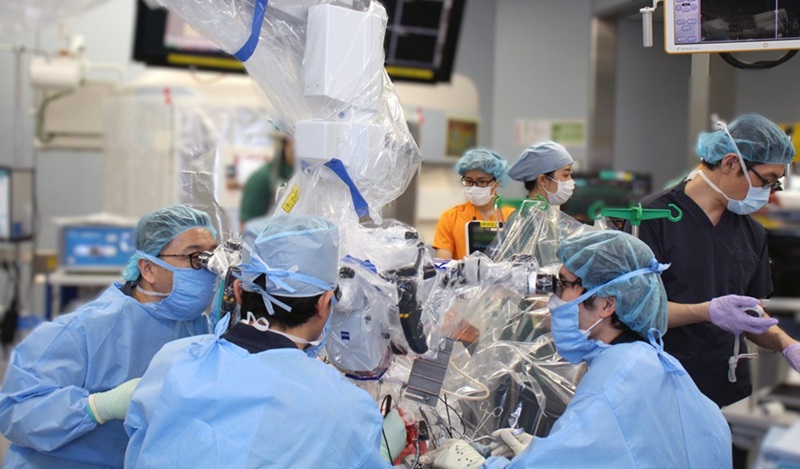
New Technique Detects Genetic Mutations in Brain Tumors During Surgery within 25 Minutes
Determining the genetic profile of brain tumors during surgery is crucial for improving patient outcomes, but conventional analysis methods can take up to two days, delaying critical decisions.... Read moreNew Imaging Tech to Improve Diagnosis and Treatment of Skin Cancers
Skin cancer is the most common malignancy worldwide, and accurately assessing tumor invasion or treatment response remains a major clinical challenge. Current imaging methods, such as confocal microscopy... Read more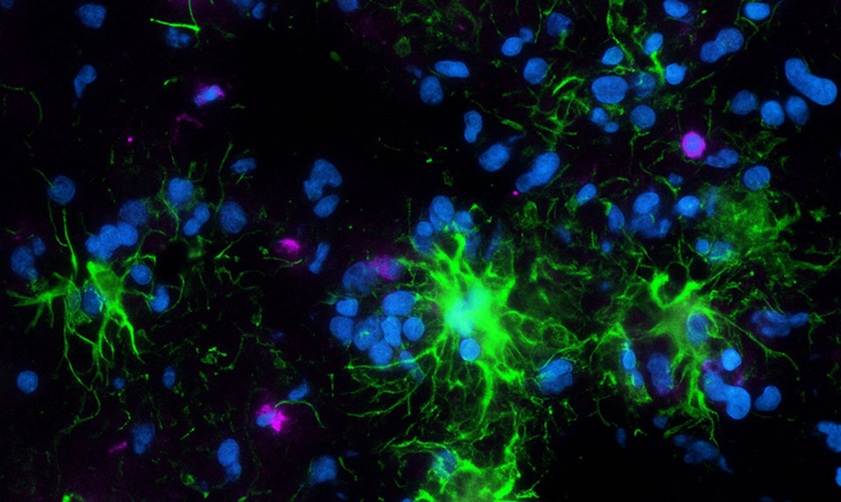
Serially Testing Brain Tumor Samples Reveals Treatment Response in Glioblastoma Patients
Glioblastoma (GBM) is the most aggressive form of brain cancer, known for rapid growth, recurrence, and resistance to treatment. Understanding how tumors respond to therapy remains challenging since imaging... Read moreTechnology
view channel
Acoustofluidic Device to Transform Point-Of-Care sEV-Based Diagnostics
Rapid and sensitive detection of small extracellular vesicles (sEVs)—key biomarkers in cancer and organ health monitoring—remains challenging due to the need for multiple preprocessing steps and bulky... Read more
AI Algorithm Assesses Progressive Decline in Kidney Function
Chronic kidney disease (CKD) affects more than 700 million people worldwide and remains a major global health challenge. The condition often progresses silently, and many patients remain undiagnosed until... Read more
Taste-Based Influenza Test Could Replace Nasal Swabs with Chewing Gum
Influenza is one of the most dangerous infectious diseases worldwide, claiming around half a million lives each year. What makes it particularly insidious is that flu viruses are contagious even before... Read more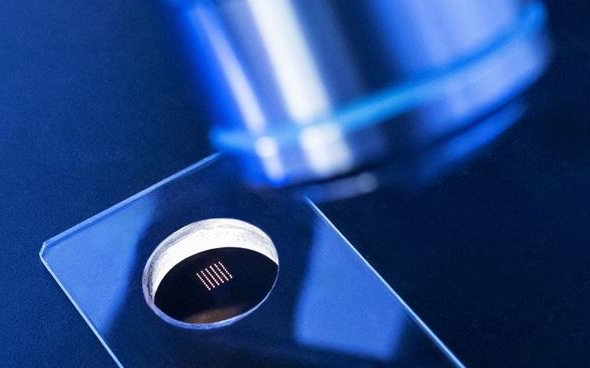
3D Micro-Printed Sensors to Advance On-Chip Biosensing for Early Disease Detection
Early-stage disease diagnosis depends on the ability to detect biomarkers with exceptional sensitivity and precision. However, traditional biosensing technologies struggle with achieving this at the micro-scale,... Read moreIndustry
view channel
Bio-Techne and Oxford Nanopore to Accelerate Development of Genetics Portfolio
Bio-Techne Corporation (Minneapolis, MN, USA) has expanded its agreement with Oxford Nanopore Technologies (Oxford, UK) to broaden Bio-Techne's ability to develop a portfolio of genetic products on Oxford... Read more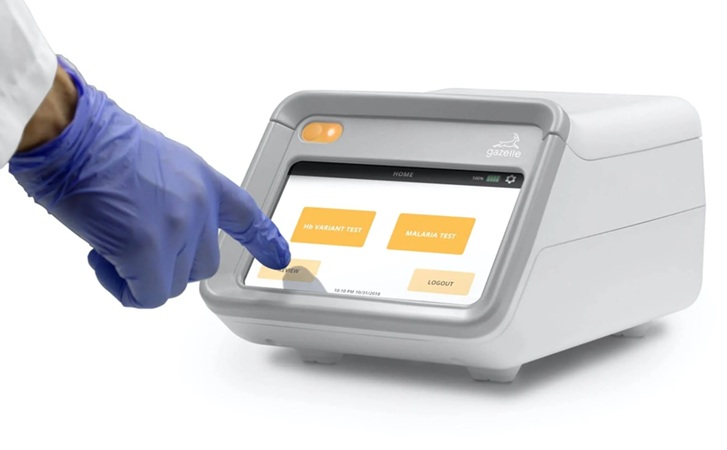
Terumo BCT and Hemex Health Collaborate to Improve Access to Testing for Hemoglobin Disorders
Millions of people worldwide living with sickle cell disease and other hemoglobin disorders experience delayed diagnosis and limited access to effective care, particularly in regions where testing is scarce.... Read more